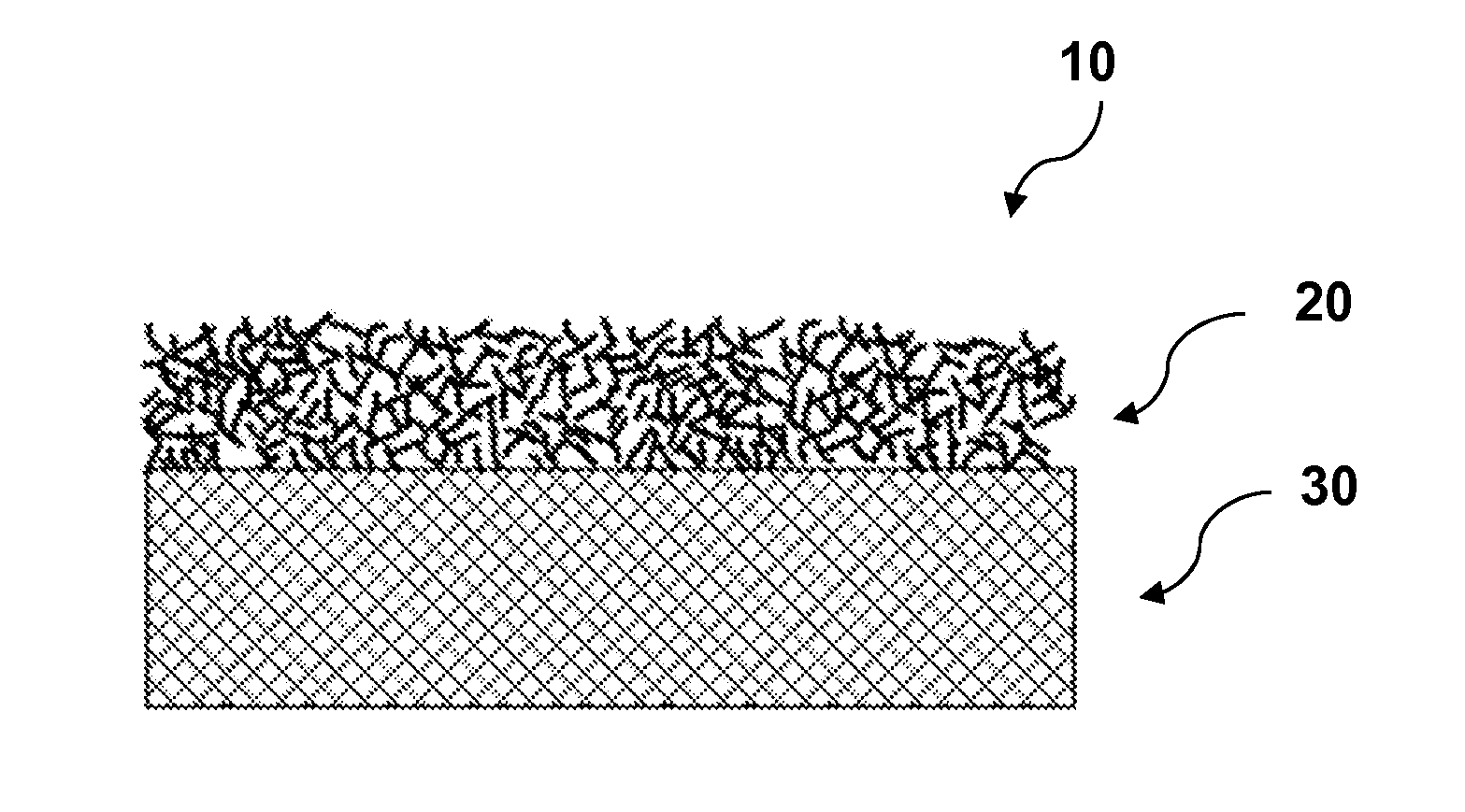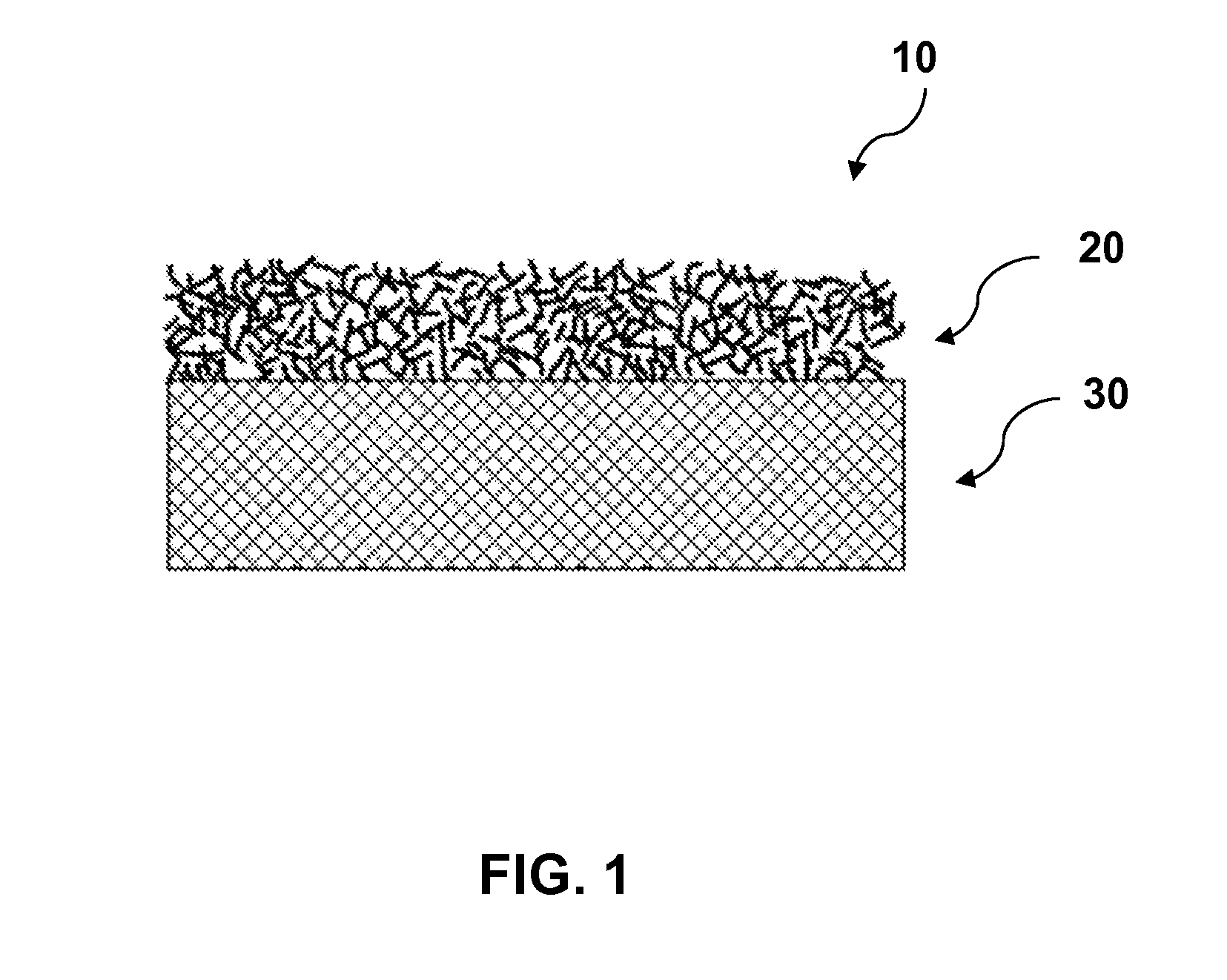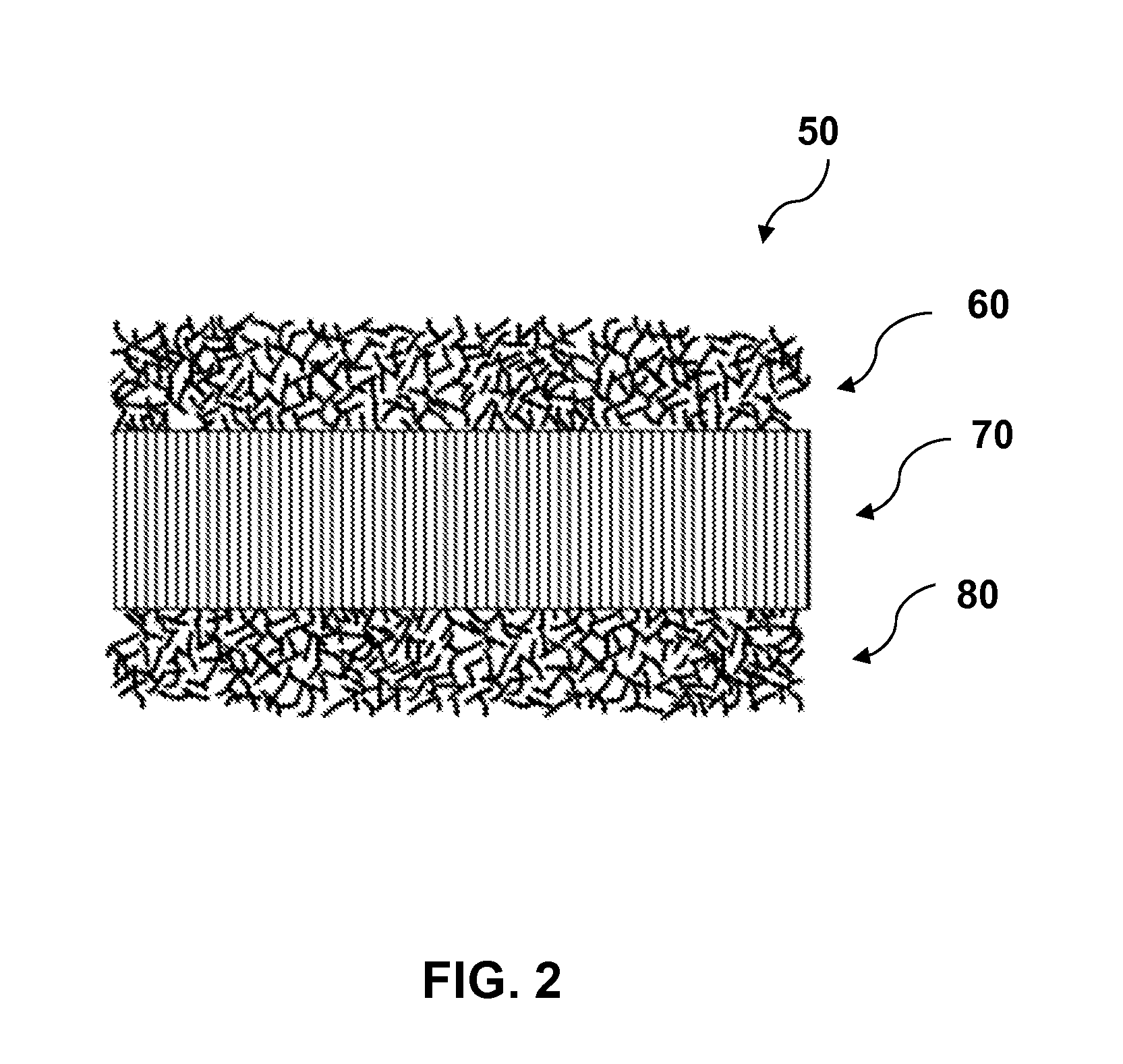Cross-linked peg polymer coating for improving biocompatibility of medical devices
a technology of biocompatibility and cross-linked pegs, which is applied in the field of cross-linked peg polymer coating for improving the biocompatibility of medical devices, can solve the problems of sensor inaccuracy and boundary layer, and achieve the effects of improving the biocompatibility of the device, high durability and resistance to adsorption
- Summary
- Abstract
- Description
- Claims
- Application Information
AI Technical Summary
Benefits of technology
Problems solved by technology
Method used
Image
Examples
example a
[0029]A quartz crystal micro-balance (QCM) gold plated crystal was coated with the cross-linked PEG coated surface of subject invention using plasma glow discharge polymerization of tri(ethylene glycol) monoethyl ether. The thickness of the coating was monitored by the frequency of the crystal. A plot of the thin film thickness versus time is shown in FIG. 3. The thickness increases linearly with time at a rate of approximately 2 nm per minute.
example b
[0030]The cross-linked PEG coated surface of subject invention was compared with prior art single layer PEG coated surface and uncoated surface for IgG-HRP (Immunoglobin G-horseradish peroxide conjugate) binding. The cross-linked PEG coating was created using the subject invention plasma glow discharge polymerization method with tri(ethylene glycol) monoethyl ether as the monomer source. The traditional single layer PEG coating was created by first coating the surface with an acrylic acid plasma polymer, followed by reacting a high molecular weight PEG-amine molecule (MW 1000) with the carboxyl groups on the surface using well-established carbodiimide chemistry. The surfaces were exposed to increasing concentrations of IgG-HRP in PBS for 24 hours, followed by rinsing with PBS. The surfaces were then brought into contact with TMB (3,3′, 5,5′ tetramethylbenzidine) solution for 10 minutes followed by adding 1N HCl to stop the reaction. The amount of IgG-HRP bound on the surfaces was qu...
example c
[0031]The cross-linked PEG coated surface of subject invention was compared with uncoated surface for human fibronectin (HFN) binding. The cross-linked PEG coating was created using the subject invention plasma glow discharge polymerization method with tri(ethylene glycol) monoethyl ether as the monomer source. The surfaces were exposed to increasing concentrations of HFN in PBS for 24 hours, followed by rinsing with PBS. Next the surfaces were exposed to a 0.5 μg / mL anti-HFN-IgG-HRP solution in PBS containing 0.5% BSA for 2 hours to allow the anti-HFN-IgG-HRP binding to any HFN adsorbed on the surfaces. The surfaces were rinsed with PBS again to remove excess anti-HFN-IgG-HRP. The surfaces were then brought into contact with TMB solution for 10 minutes followed by adding 1N HCl to stop the reaction. The amount of HFN / anti-HFN-IgG-HRP complex bound on the surfaces was quantified by the intensity of the color (detected at 450 nm) produced by the oxidized TMB. As can be seen in FIG. 5...
PUM
 Login to View More
Login to View More Abstract
Description
Claims
Application Information
 Login to View More
Login to View More - R&D
- Intellectual Property
- Life Sciences
- Materials
- Tech Scout
- Unparalleled Data Quality
- Higher Quality Content
- 60% Fewer Hallucinations
Browse by: Latest US Patents, China's latest patents, Technical Efficacy Thesaurus, Application Domain, Technology Topic, Popular Technical Reports.
© 2025 PatSnap. All rights reserved.Legal|Privacy policy|Modern Slavery Act Transparency Statement|Sitemap|About US| Contact US: help@patsnap.com



